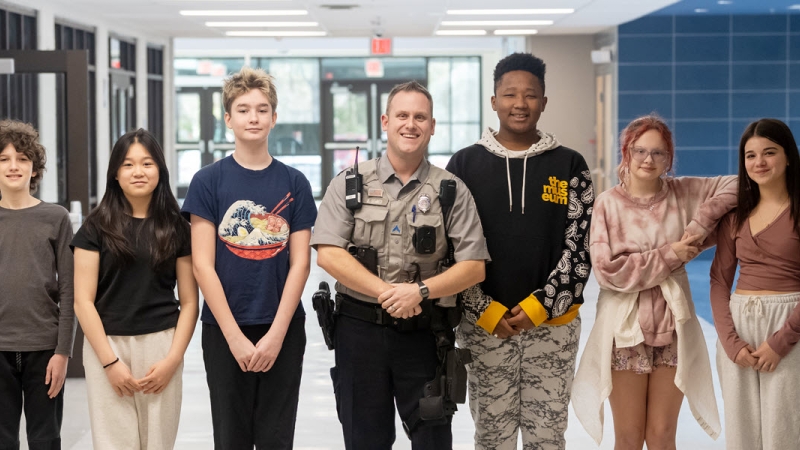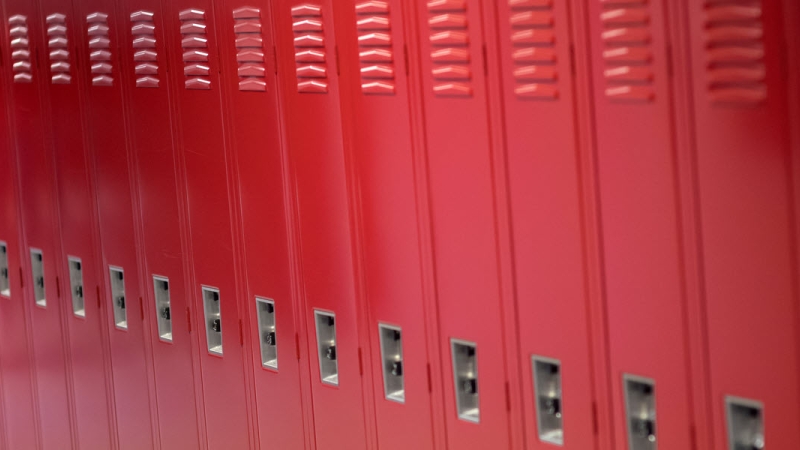
Frequently Asked Questions About Lockdown Drills
Important information about Lockdown Drills within FCPS
General
A: No, our lockdown drills consist of simple verbal and written instructions. We do NOT use an “active shooter” drill approach (training weapons, role players, first aid, etc.).
A: A lockdown may be announced by any means possible; such as the public address system (PA), handheld radios, telephones, verbally, classroom emergency call buttons, etc. A PA announcement is the method primarily used.
A: Typically, it is a school administrative staff member or a public safety official but anyone who sees a potentially violent intruder(s) in the building or on the school site can do so.
A: Lockdown drill preparations are conducted prior to the first drill of the school year.
- The appropriate grade level lockdown procedures video is watched and discussed.
- Teachers review the “Teacher Tips to Support Students Before, During, and After Required Lockdown Drills” and discuss steps to take during a lockdown.
- Teachers review the Lockdown Procedures from the Office of Safety and Security (OSS) Crisis Management and Security Plan, Classroom Guide for Teachers (“The Red Book”).
- Throughout the school year, teachers review lockdown procedures with their students to ensure reinforcement of proper actions in which to adhere.
A: Run-Hide-Fight, ALICE (Alert, Lockdown, Inform, Counter, Evacuate) or other programs incorporate lockdown procedures as a primary part of an active shooter response strategy. FCPS has provided Run-Hide-Fight training to thousands of adult staff members in our administrative centers. We believe these strategies are better suited for adults who are able to make their own decisions in stressful situations.
FCPS utilizes an options-based response to the active shooter or armed assailant scenario. Lockdown is but one of the components of this strategy, others include avoiding the threat and evacuating to create distance. In addition to the lockdown drills, all students and staff perform 15 evacuation drills annually, 13 from school buildings and two bus emergency evacuations.
All response contingencies to critical incidents are practiced through mandatory drills and functional exercises in all schools and centers. All schools implement a comprehensive crisis management plan that is updated and reviewed annually.
A: No. Plain language is the public safety standard of communication in critical incidents to avoid confusion in stressful situations.
A: Lockdown drills are best learned without parents present. Parents volunteering at the school during times of drills are included in conducting the drill. Parents can view the training video by scheduling time with the school administration.
A: Visitors are expected to follow the instructions of the teacher or administrator who they are with at the time of the drill.
Attendance
A: Yes, lockdown drills are required by law. In accordance with Commonwealth of Virginia Code 22.1-137.2, lockdown drill must be performed at least two times each school year. All schools need to conduct lockdown drills at least once during the first 20 school days of each school session.
- At least one additional lockdown drill shall be held after the first 60 days of the school session.
- Pre-K and Kindergarten students shall be exempt from mandatory participation during the first 60 days of the school session.
- Every school shall provide parents with at least 24 hours’ notice before the school conducts any lockdown drill.
A: No. All FCPS staff and students are required by law, and FCPS policies and regulations to participate in all drills when on FCPS property.
A: No, they will participate the next time a drill is conducted at their school.
A: No. Every public school shall provide the parents of enrolled students with at least 24 hours' notice before the school conducts any lock-down drill, provided, however, that nothing in this section shall be construed to require such notice to include the exact date and time of the lock-down drill.
A: Yes, public service (PA) system announcements are made and repeated at the time the drill is executed to make sure people understand they are participating in a drill and not the real thing.
Building Protocols
A: Follow these four simple steps if you are unable to immediately get into a lockable classroom:
- Avoid the threat
- Evacuate if it is safe to do so
- Move far enough away until they feel safe
- Call a parent or 911 and tell them who you and where you are
A: Depending on where the threat is in the building, time permitting, and gym configuration, locking down inside the gymnasium is desired. If time does not permit or the threat is imminent, these steps should be followed:
- Avoid the threat
- Evacuate if it is safe to do so
- Move far enough away until they feel safe
- Call a parent or 911 and tell them who you and where you are
A: Locking down inside the cafeteria depends on the number of students in the cafeteria and the availability of space where they can safely secure in a lockable space. If lockable space is not available, these steps should be followed:
- Avoid the threat
- Evacuate if it is safe to do so
- Move far enough away until they feel safe
- Call a parent or 911 and tell them who you and where you are
A: Locking down inside the library depends on the number of students in the library and the availability of space where they can safely secure in a lockable space. If lockable space is not available, these steps should be followed:
- Avoid the threat
- Evacuate if it is safe to do so
- Move far enough away until they feel safe
- Call a parent or 911 and tell them who you and where you are
A: Depending on where the threat is in the building and time permitting, locking down inside the auditorium is desired. If time does not permit or the threat is eminent, these steps should be followed:
- Avoid the threat
- Evacuate if it is safe to do so
- Move far enough away until they feel safe
- Call a parent or 911 and tell them who are and where you are.
A: We recommend students, who cannot lockdown, move to the closest exit and stage inside the exit door to simulate they would exit the building and move far enough away until they feel safe. At the conclusion of the drill, students are instructed as to the actions they would take if it were an actual lockdown.
A: They should avoid the threat and seek to create distance by evacuating the room and building if possible.
Prevention
A: Prevention through early intervention is key to mitigating the potential for armed assailants in your school. Immediately report any threats you become aware of whether they are direct or indirect. Immediately report suspicious persons or activity, “See something, say something.” Additionally, following the rules and obeying safety and security measures in place at your school will contribute towards a safer learning environment.
A: As part of Fairfax County Public Schools' continuing efforts to maintain safe schools, a confidential and anonymous Tipline is available to students, parents, staff, and other members of the FCPS community. You may submit your anonymous tips using any of the following methods: Online, Text or Phone. More information on the Tipline can be found on the Safety Tipline page.
A: FCPS policy regarding lockdowns, as part of an options-based response to active assailant situations, includes the instruction to lock the door and cover the door window. Experience is gained through conducting the three mandatory school drills as required by the Commonwealth of Virginia. Most schools utilize a heavy black cover attached to the top of the door window that is easily rolled down when securing the door. At all other times teachers are required to leave the classroom door vision panel uncovered to enable administrators to check on classes without disturbing ongoing instruction. Additionally, blinds are closed on first floor classrooms that face the outside of the building.
Impact
A: Yes. Research shows that the safest place to be in an armed assailant type situation is inside a locked room. As with any active assailant strategy, lockdowns are an important component of an options-based plan.
A: The information circulating as to the emotional impact of lockdown drills is abundant on both sides of the debate. While no system is perfect, we do believe the current climate dictates preparedness for many types of emergencies. We all hope to never employ these practices in a real situation, but practice and preparedness are the first steps in the safe mitigation of any emergency.
FCPS currently conducts lockdown drills based on the latest best practices and guidelines as published by the Virginia Department of Criminal Justice Services. These drills reinforce the ability of teachers to quickly execute procedures of the physical lockdown, to include ensuring the door is locked, students are moved away from the portal and that all remain calm.
Parents should have conversations with their children about the importance of safety drills. If a parent feels their child experiences any challenges with drills know that all FCPS students have access to school-based mental health services to support social and emotional wellness. These services are provided by school counselors, school psychologists and school social workers, who deliver both preventative and responsive services.
These services include individualized support to students exhibiting mental health challenges, such as depression, and they can be accessed at any time by contacting your child’s school directly. There are school counselors, school psychologists, and school social workers assigned to all FCPS schools who can collaborate with community-based mental health practitioners to ensure coordinated mental health support. For additional information regarding FCPS mental health services for students, please contact the Office of School Psychology Services at 571-423-4250.
A: Additional tips and guidance for parents are provided on the Emergency Planning and Crisis Response page.





